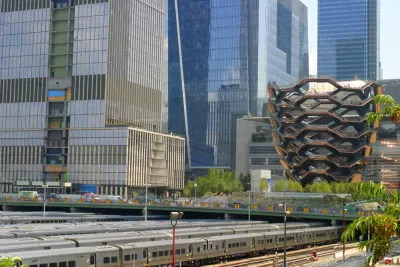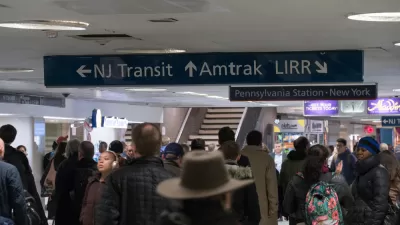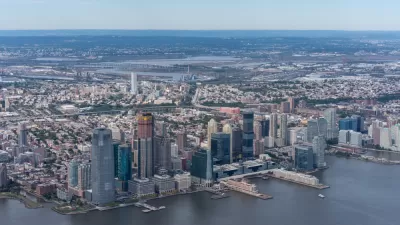Considered by some to be the most critical infrastructure project in the country, the Gateway Project is an ongoing example of the extreme costs of bureaucratic and political neglect.

The Gateway Development Commission, tasked with managing the Gateway Program to develop new capacity for the Northeast Corridor between Newark, New Jersey and Penn Station in New York City, announced at the end of August that the project will open three years later than expected and cost $2 billion more to construct.
Officials blamed some of the delay and expense on “market volatility and inflation,” according to an article by Dana Rubinstein for the New York Times. “The commission hopes to make up much of the cost difference with funding from the federal infrastructure law passed last year. The remaining cost overrun will be split between New York and New Jersey and the federal government.”
The news is only the latest unwelcome development in the long saga of the Gateway Program. Since the Biden administration took office, the news has generally been good—funding approval for the Portal Bridge and a $14 billion funding agreement between the states of New Jersey and New York. The last time Planetizen picked up news of time and money being added to the project timeline was in September 2020.
Rubinstein includes a discussion of the high costs of transit infrastructure investments in the article, citing Eric Goldwyn, director of the Transportation and Land-Use program at the N.Y.U. Marron Institute, to explain how expensive is the project compared to other projects in the country and world. The Marron Institute produced the first study on the high cost of transit in 2021.
FULL STORY: Commuter Tunnel Under the Hudson Won’t Be Finished Until 2035

Maui's Vacation Rental Debate Turns Ugly
Verbal attacks, misinformation campaigns and fistfights plague a high-stakes debate to convert thousands of vacation rentals into long-term housing.

Planetizen Federal Action Tracker
A weekly monitor of how Trump’s orders and actions are impacting planners and planning in America.

In Urban Planning, AI Prompting Could be the New Design Thinking
Creativity has long been key to great urban design. What if we see AI as our new creative partner?

King County Supportive Housing Program Offers Hope for Unhoused Residents
The county is taking a ‘Housing First’ approach that prioritizes getting people into housing, then offering wraparound supportive services.

Researchers Use AI to Get Clearer Picture of US Housing
Analysts are using artificial intelligence to supercharge their research by allowing them to comb through data faster. Though these AI tools can be error prone, they save time and housing researchers are optimistic about the future.

Making Shared Micromobility More Inclusive
Cities and shared mobility system operators can do more to include people with disabilities in planning and operations, per a new report.
Urban Design for Planners 1: Software Tools
This six-course series explores essential urban design concepts using open source software and equips planners with the tools they need to participate fully in the urban design process.
Planning for Universal Design
Learn the tools for implementing Universal Design in planning regulations.
planning NEXT
Appalachian Highlands Housing Partners
Mpact (founded as Rail~Volution)
City of Camden Redevelopment Agency
City of Astoria
City of Portland
City of Laramie





























